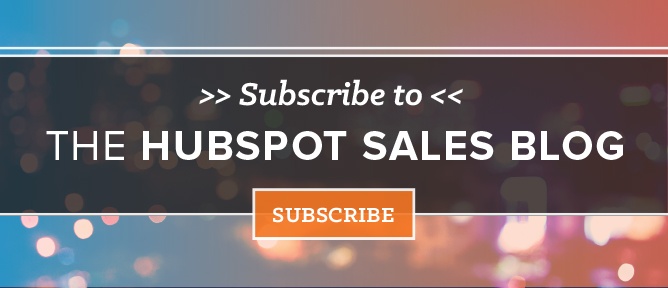
Every salesperson has their own style. The techniques reps develop during their careers dictate whether or not they effectively prospect, connect with buyers, and reach quota.
However, some strategies are more effective than others. A handful of traditional sales techniques in use today are well past their prime, and losing efficacy fast. So which tactics should you aim to master in 2016? And better yet, which techniques should be avoided?
Below are seven sales strategies that are losing their effectiveness with the modern day buyer.
1) Cold Calling
Cold calling is the process of calling prospects you don’t know anything about and have no reason to believe they’d be interested in what you’re selling, and pitching your product. Sales reps use this strategy because they believe the more calls they make, the more likely someone will return their call and show interest in their product.
However, research has revealed it takes an average of eight cold attempts to connect with a prospect, while only 2% of cold calls result in a meeting. Although calling hundreds of people and taking a high-volume approach seems like it would work out in the long run, wasting valuable time dialing 100 people 800 times and securing only two meetings isn’t ideal.
Instead of cold calling, take a more targeted approach by limiting your outreach to prospects who closely match your ideal buyer persona or have demonstrated interest in your product. Through research, thorough discovery, online interactions, and mutual connections, your first call to a prospect should be warm, not cold. Remember: It’s okay to call a prospect you haven’t met in person, but you have to do it correctly.
2) Buying Prospects
Instead of developing a pipeline of inbound leads and good fit buyers, some sales teams rely on purchasing lists of prospects from a third party. Proponents of this approach believe that sales is a numbers game -- the more calls you make to more people, the more deals you will close. Why not just buy a list and let salespeople hit the phones?
While this tactic provides you with a “full” pipeline, likely only a few -- if any -- of these prospects are actually interested in your offering. Buying a list provides you with leads fast, but often results in salespeople wasting their time with poor fit prospects. And while you’re chasing down ice cold leads, hot prospects visiting the company’s website are often ignored.
In addition, modern salespeople need to be mindful of the prospect experience -- and being a name on a purchased list is pretty terrible. When a salesperson cold calls a purchased lead, the buyer on the other end of the line now has to waste their valuable time hearing about a product of no interest. For both the buyer and seller, this is a rotten experience.
Filling your sales pipeline can be difficult, but purchasing a list and pulling cold leads to you isn’t the best answer. Instead, by creating and sharing content of interest to your potential buyers, engaging with thought leaders in your industry, and actively contributing on social media channels your buyers use, you can attract prospects. There are likely thousands of people talking about a problem your product can solve. Find them and start a dialogue.
3) Qualifying Solely by LinkedIn Titles
LinkedIn is a tremendous platform for prospecting. The social network enables reps to search for specific prospects based on a range of criteria, such as title, location, company size, etc. However, some reps search for a given LinkedIn title, surface a number of profiles, and stop there. Instead of doing additional research, they assume all CEOs or VPs are interested in their product, and the very fact that a person has this title makes them qualified.
Instead of qualifying prospects based on their job title alone, sales reps should perform additional research in order to put together a lead list full of truly interested prospects. Priority should go to prospects who have actively demonstrated interest in your product through taking certain actions, such as requesting a trial or visiting a pricing page. Reaching out as effectively and efficiently as possible to these leads is critical.
4) Mass Email Blasts
Similar to cold calling, believers in this strategy think the more eyes they’re able get on their product, the more sales they will generate. Why sell to one person at a time when you can mass pitch to 500?
However, it’s nearly impossible to provide a personal experience and relevant value to each of your recipients with a mass email blast. Generically pitching your product to hundreds of people simultaneously doesn’t allow the individual prospect to see how it might benefit their business specifically. Without personalization, prospects just see another cold email. Using a mass email strategy results in lost credibility, and will likely end with your messages finding their way into a prospect’s trash folder.
Instead of aiming to move hundreds of people into your funnel at once, build meaningful relationships with individual prospects. Writing a warm, personalized email provides substantial value to a prospect.
5) Not Knowing When to Quit
Just like you avoid texting a romantic interest 10 times in a row without a response, following up too frequently with a prospect is annoying, ineffective, and likely scaring them away -- quickly.
Tom Atkinson and Ron Koprowski revealed in a study that 12% of buyers identified sales reps who come off as “pushy,” “aggressive,” or “disrespectful” as their biggest pet peeve. Constant emails and calls add up to an annoyed prospect, a tarnished brand reputation, and potentially, a lost deal.
You will need to stay in touch with your prospects during their journey, but it’s important to provide value and education with every call and email. Educate and guide your prospects -- don’t bug them. To determine when it’s time to call it quits, send a breakup email and let the buyer’s response (or lack thereof) inform your next steps.
6) Hard Sales Tactics
Scaring a buyer into thinking the deal currently available is going away -- and fast -- is a tactic reps use to close a deal sooner rather than later. Salespeople often rely on hard sales tactics such as offering a limited-time deal in order to hit their monthly number -- a totally meaningless metric for the buyer.
However, the modern buyer doesn’t take kindly to being pressured. In fact, resorting to a “limited time offer” might force your prospect into the arms of a competitor and a rep who’s willing to guide the potential buyer through their journey -- not force them through it.
Replace messaging that plays on buyers’ fear of missing out with language that creates a feeling of excitement about the future -- and never force a buyer through their process faster them they’re willing to go.
7) Trash Talking
Trash-talking salespeople not only want to position their product as the best solution -- they also want to explain in detail why their competition’s product won’t work. They spend time breaking down other products in order to ensure the prospect won’t buy from a competitor.
Unfortunately, this tactic can backfire. As Art Sobczak points out, bringing up other options can result in improved credibility for your competition. In addition, trash talking also presents the prospect with choices they might not be aware of. So while a trash talking salesperson’s goal is to position their product as the best solution, they may have actually helped the competition.
At some point during a sales conversation, someone will mention a competitor. By bypassing the opportunity to put them down, and focusing on your product’s benefits instead, you can provide valuable information and help the prospect make a decision. Remember: Your call with this prospect is about your product, not your competitor’s.
While there’s no silver bullet sales strategy that guarantees success, some techniques have lost their effectiveness. If you’re using any of these seven tactics in your day-to-day, you might want to do yourself a favor and stop -- ASAP.












